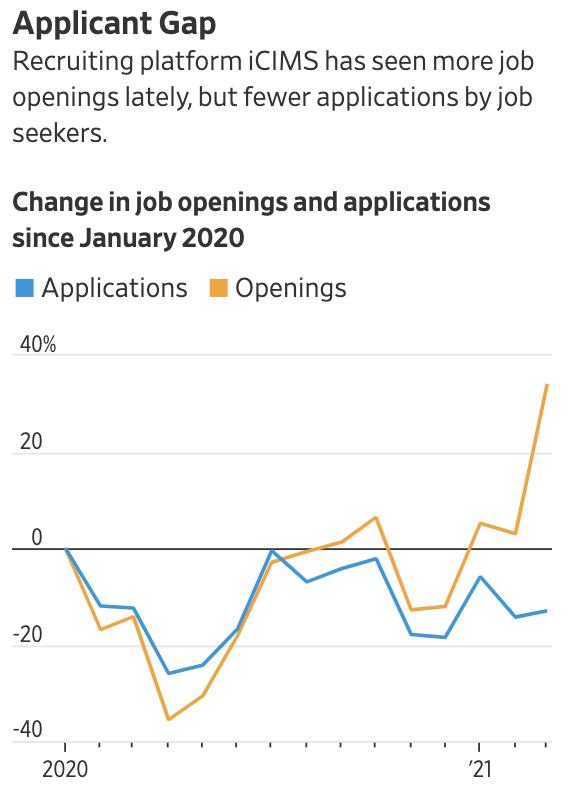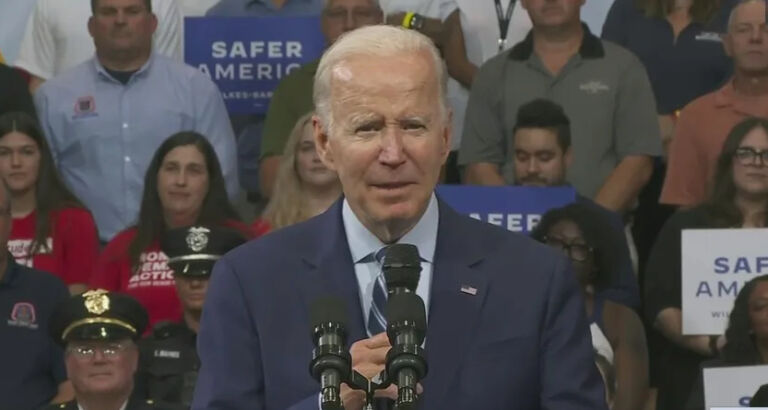“There are more job openings in the U.S. this spring than before the pandemic hit in March 2020, and fewer people in the labor force,” according to the Wall Street Journal. The April jobs report was released last week and it made clear that jobs are in abundance, but fewer people are choosing to take them.
The question is, “Why?” It would certainly seem plausible that Team Biden’s decision to continue enhanced unemployment benefits has served as a disincentive for some would-be workers. Writing for Carolina Journal, John Hood notes, “As the labor market has begun to reset towards normal, the disincentive effects of enhanced UI benefits are coming into focus. It’s one reason why the April employment report showed hundreds of thousands fewer Americans getting jobs than expected…”
Beyond that economic reality is the fact that some workers express significant fear of catching COVID. With the vaccine becoming increasingly accessible, to the point where the U.S. might end up with around 300 million extra doses, this concern should only decline with every passing month.
Another reason for fewer Americans going back to work is the fact that a number of schools still aren’t offering full-time in-person instruction. Sorting out child care, especially if your job requires you to be on location, is extremely difficult for some mothers and fathers.
Many of us can either sympathize or at least understand the incentive models that have led to this labor lull, but that doesn’t mean there won’t be painful consequences if this continues. Human capital is our most valuable asset and fewer workers means fewer innovations, shorter supply, and higher costs.
This chart, from Wall Street Journal, depicts the growing chasm between available jobs and Americans applying for them.
 One hopes this is just a temporary setback and we soon recover the robust labor market we had before the pandemic. A work force, I might add, that had the highest levels of minority participation in decades.
One hopes this is just a temporary setback and we soon recover the robust labor market we had before the pandemic. A work force, I might add, that had the highest levels of minority participation in decades.This is a time where state legislators cannot afford to be apathetic. Unlike the federal government, they don’t have the ability to merely print more money. Thankfully, North Carolina is fiscally strong. However, that doesn’t negate the role that proper incentives for returning to work can play. Economic health today doesn’t guarantee it tomorrow.
In light of this, some state legislatures across the U.S. are rolling back unemployment benefits, to reduce the disincentive to work. However, there’s no denying that vaccine distribution is another critical factor in promoting confidence in returning to work.
On that note, can someone please tell the CDC to do a better job of messaging? Requiring fully vaccinated people to behave as if they are likely to transmit or catch the virus seems like it would undermine efficacy messaging. Lastly, expanding education savings accounts would empower parents of school-age children to find a school that meets their needs.
Lastly, expanding education savings accounts would empower parents of school-age children to find a school that meets their needs.
The sooner we get Americans back to work, the better.


